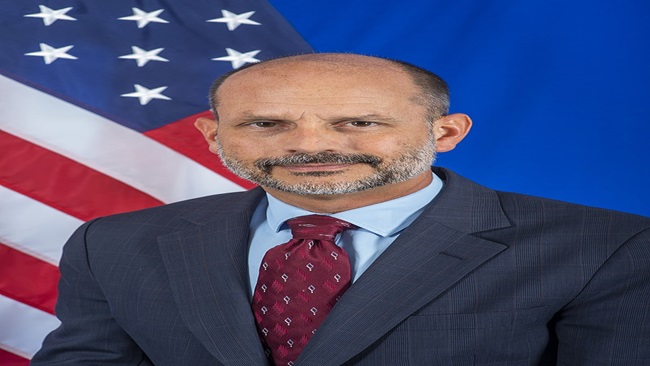Privacy Overview
This website uses cookies so that we can provide you with the best user experience possible. Cookie information is stored in your browser and performs functions such as recognising you when you return to our website and helping our team to understand which sections of the website you find most interesting and useful.


















30, January 2019
Yellow Vests: Are France’s working poor being left behind? 0
France enjoys a reputation for having a generous social safety net that provides well for the least fortunate. But weeks of Yellow Vest unrest have highlighted that many French citizens live in lingering economic uncertainty.
France ranks among the countries that most generously redistribute resources from rich to poor, and yet great disparities in wealth persist. In many ways the working poor – embodied by the Yellow Vests – feel they are being left behind.
Since the start of the 2008 economic crisis, the median living standard has stagnated in France overall. In 2015 this amounted to €20,300 per year, slightly lower than it was in 2008.
Wages also remain relatively low compared to other Western industrialised nations. The median annual wage of the top 10 percent was €56,640 in 2015 versus the paltry €8,280 earned by the bottom 10 percent. Individuals in the highest income bracket account for only 1 percent of the population (defined as those earning at least €106,210 annually or €8,850 a month).
Disparities between those at the top and those at the bottom also remain stark. In 2014, the top 10 percent took in 33 percent of pre-tax income compared to just 23 percent received by the lowest 50 percent, according to the 2018 World Inequality Report. The top 1 percent received 11 percent of total income.
A little more than 14 percent of France’s population – one of the lowest levels in the EU – lives below the poverty line of €1,015 per month.
Unsurprisingly, the unemployed are most likely to find themselves living in poverty (at 37.3 percent). France’s unemployment rate has hovered above 9 percent for the past decade. By contrast, the unemployment for the 28 EU members averaged 6.7 percent in November, the lowest rate since before the 2008 financial crisis, according to Eurostat.
Single-parent households and young people are also among the most at-risk portions of the French population.
The ‘myth’ of French equality
French economist Thomas Piketty says the image of France as a bastion of relative economic equality is its “great national myth”.
Per capita income grew an impressive 3.7 percent on average from 1945 to 1980, known in France as the “Thirty Glorious Years” (Les Trente Glorieuses). A major trend during the “glorious” period was an increase in the income share going to the bottom 50 and middle 40 percent, with a subsequent decline in the portion going to the top 10 percent.
But the annual rise in average national income then fell to around 1 percent over the next three decades (1980-2014), with inequality increasing acutely starting around 1983.
“The fact remains that France has also experienced a sharp rise in inequality,” Piketty wrote in a blog post for Le Monde. “Between 1983 and 2015, the average income of the richest 1% has risen by 100% (above inflation) and that of the 0.1% richest by 150%, as compared with barely 25% for the rest of the population (or less than 1% per annum).”
“The richest 1% alone has siphoned off 21% of total growth, as compared with 20% for the poorest 50%.” The disparity between rich and poor in France was less extreme than that seen in the United States but was still “fairly spectacular”, he said.
And the gains show no signs of slowing for those at the very top. “[T]he higher we go at the top of the distribution, the higher the rise in top income shares.” The World Inequality Report found that, between 1983 and 2014, 21 percent of France’s total growth went to the bottom 50 percent and the same share of growth went to the top 1 percent.
Nevertheless, France ranks as one of the European nations that most generously redistributes wealth, surpassed on this score by only five other EU countries (Belgium, Denmark, Finland, Ireland and Slovenia).
France boosted its redistribution efforts in the wake of the 2008 crisis with an increase in the top income tax rate and a revalorisation of social benefits. Universal healthcare and state-funded education also help ensure that French citizens are provided with some key basic needs.
Yellow Vest unrest
Despite France’s relatively generous social safety net, economic uncertainty is acutely felt by many. This feeling has boiled over into nearly three months of weekly Yellow Vest protests, the worst unrest France has seen in decades. Initially sparked by a proposed rise in the fuel tax that critics said would hit the poorest the hardest, the movement has since broadened to include many who feel the Macron government is out of touch with the needs of the working poor.
The man critiqued as “president of the rich” has not helped dispel this image with his dismissive comments to those looking for work or by saying many of the poor are just “screwing around”. Moreover, an announced €5 per month cut to a housing benefit would affect millions of people, including many below the poverty line and hundreds of thousands of students.
At a recent town hall meeting, held as part of the “National Debate” Macron launched in January to assuage Yellow Vest anger, attendees said the poor were being squeezed while the rich safely stash their money in tax havens.
“We’re under record fiscal pressure, with the value-added tax, income tax, social charges… yet public services are disappearing, hospitals and police stations are closing, and maternity clinics are moving away,” said one attendee at a recent meeting in Trouville-sur-Mer.
“We have to go get money from the big guys…” said another woman. “Every year, we lose €60 to 80 billion to tax havens.” A report from the main union for French tax authorities actually found this number to be much higher, concluding that tax evasion cost the government between €80 and €100 billion in 2017.
As the protests continued each Saturday, Macron eventually agreed to abandon plans for raising the fuel tax and promised extra funding for minimum wage earners and tax cuts for pensioners. But the president’s reputation for being out of touch with the concerns of the people has persisted. One Yellow Vest protester told CNews he thinks Macron has failed to recognise the “urgency” of the financial troubles that low-income workers are facing.
Others have criticised Macron for standing firm on plans to end a wealth tax on households with assets above €1.3 million. Inheritance remains a major factor in wealth disparity, one that can persist from generation to generation. In 2015, the richest 1 percent received 6.8 percent of the income but 30 percent of inherited wealth, according to the National Institute of Statistics and Economic Studies (INSEE).
“Beyond inequalities in resources, there is also an inequality of opportunity in France, exemplified by insufficient social mobility,” Michael Förster, an economist specialising in inequality at the OECD, told Le Parisien.
And France’s tax practices are exacerbating the economic divide, the World Inequality Report found, noting that “effective tax rates are lower for the very rich than for the middle class, and new tax legislations will further decrease these rates for the richest”.
Given the circumstances,it is “difficult to understand” why some “think it opportune to abolish the wealth tax on financial assets, or to impose a lower tax on financial incomes than on income from employment”, Piketty wrote. “To promote mobility, it would be more judicious to lower the property tax… for the households who have borrowed to buy property.”
France leads its EU counterparts in the amount of money it collects in taxes, which accounted for48.4 percent of GDP in 2017, the highest percentage in the European Union. The average in Europe is 40.2 percent.
Another potential problem with the French taxation system is that those earning a modest €27,500 a year are taxed at the same rate – 30 percent – as those making around €73,800, a sum that goes quite far in France.
Moreover, the top income tax bracket is defined as anyone making more than €156,244, meaning those high earners are taxed at a similar rate as the ultra-rich – those making €1 million or more per year.
Piketty said it was “urgent” that France address its problems with income inequality. When populations feel resentment at being left behind economically, they become increasingly attracted to far-right politicians who offer convenient scapegoats for their ills, such as immigrants or other marginalised populations.
The “most vulnerable social groups have the impression they have been abandoned”, Piketty said, rendering them “increasingly attracted by the sirens of xenophobia”.
France 24